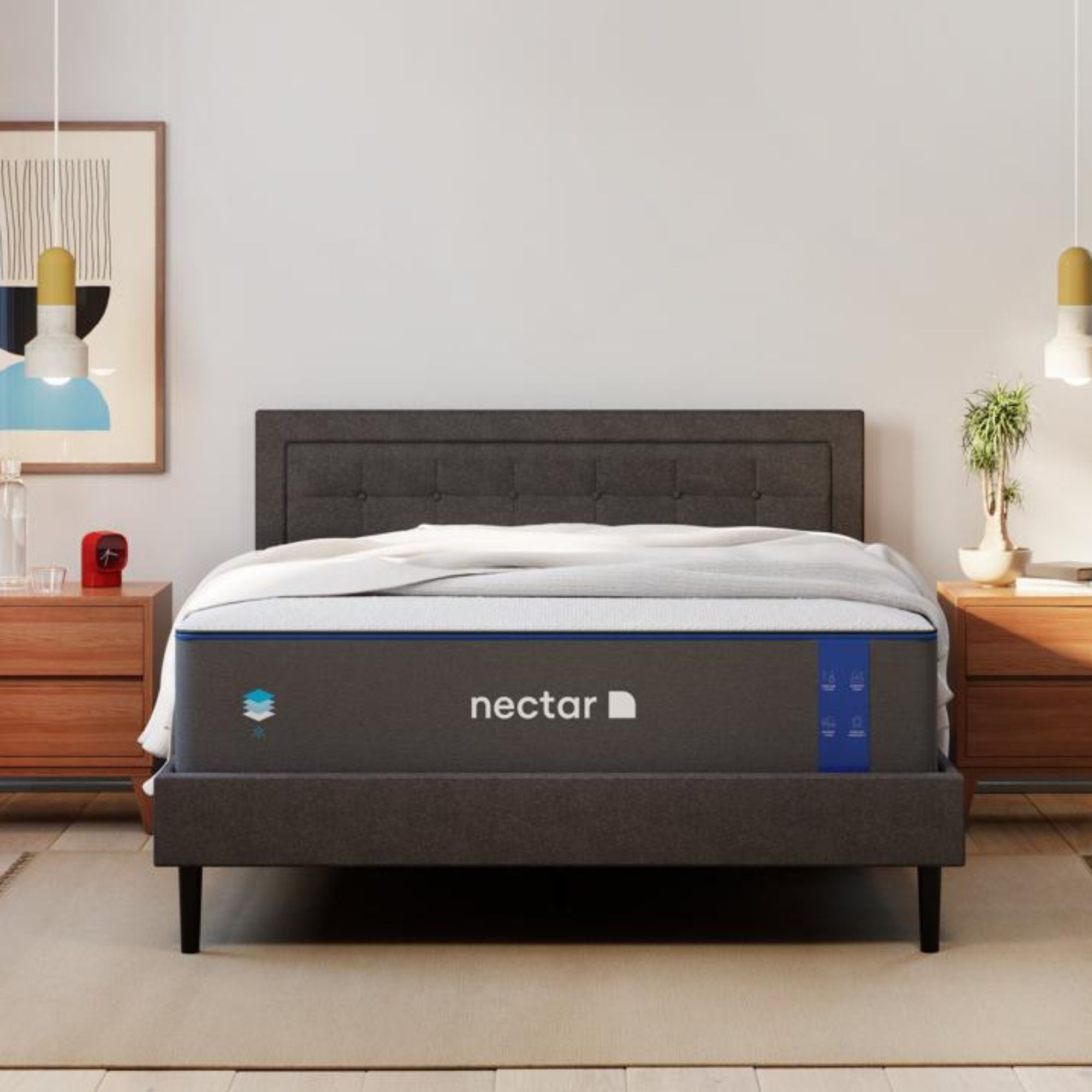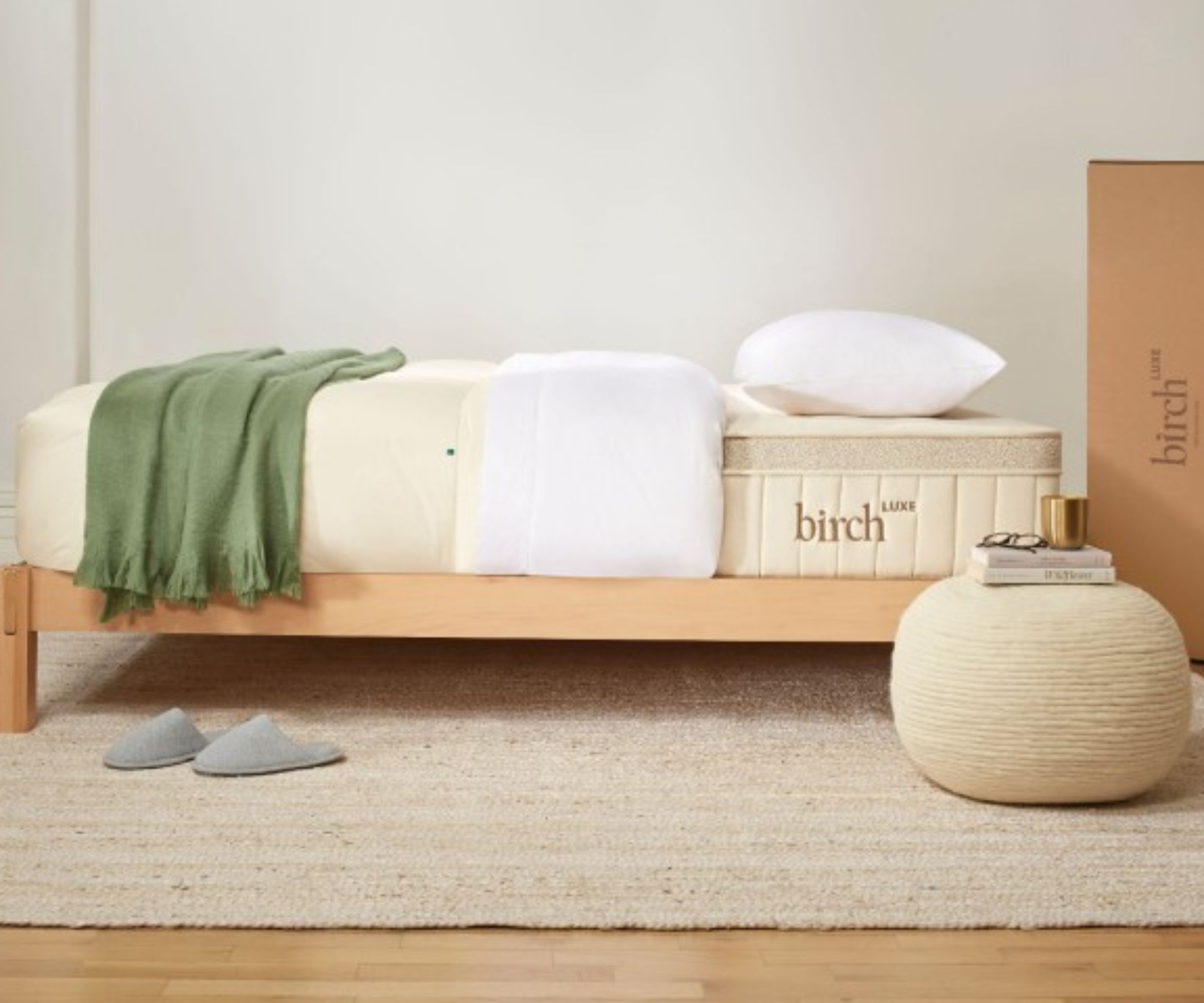I'm a first-time homeowner − these are the 10 things I wish I knew about mattresses before I bought one
Learn from my mistakes – here's everything you need to know about buying your first mattress, from what to spend to how to test


Two years ago, after years of living in student rentals, I bought my first home. For the first time, I was on the hunt for my own mattress, and I had next to no idea where to start.
Of course, as part of the H&G team, I knew all the top contenders for the title of 'best mattress', but I didn't know which mattress would best meet my sleep needs and budget constraints. It took a lot of trial and error, and I got there in the end, but I wish I'd known what to look for as a first-time mattress buyer.
So, to help you learn from my mistakes, I've compiled a list of the 10 things I wish I knew before I bought a mattress. Whether you're a first-time buyer, or you're buying for the first time in a long time, this article should tell you everything you need to know to find your dream bed.
What I wish I knew before I bought a mattress
To further streamline your shopping experience, I've picked out a few of my favorite mattresses, each of which is tried and tested by an H&G sleep expert. We assess each mattress against the same criteria: comfort; support; cooling properties; motion isolation; edge support; and the all-important price.
1. Material matters

Before I started mattress shopping, I only knew about memory foam and innerspring beds. Turns out, there are tons of different mattress types to suit every sort of sleeper.
An innerspring mattress is the traditional type. That's what you'll find in most American homes, and it's what I'd slept on growing up. I knew I liked the supportive feel of the internal coils, but I was looking for something a little softer.
I thought I wanted a memory foam mattress. Known for their pressure-relieving properties, I thought a memory foam mattress would make a nice change after my inflexible innerspring. It's certainly more supportive, but memory foam tends to trap heat, which is less than ideal for this hot sleeper.
I wish I'd known about a hybrid mattress, which combines all the best bits of memory foam and innerspring technology. If I'd bought a hybrid mattress outright, I could have got all the plush comfort of memory foam, along with the airflow and support of an innerspring.

Out of all the beds we've ever tested, the Saatva Classic Mattress is the best. You get incomparable motion isolation and edge support, which is ideal for couples and light sleepers, plus a careful balance between comfort and support.
You can find more detail in our Saatva Classic Mattress review.

Before I started shopping, I spent a few hours sifting through the H&G mattress buying guides. The Nectar Memory Foam Mattress appears time and again, famed for its pressure-relieving properties and body contouring. It's just a shame it sleeps a little hot.
You can find more detail in our Nectar Memory Foam Mattress review.

If I had unlimited money to spend on a new mattress, I'd buy the Tempur-Pedic ProAdapt Mattress. This high-tech mattress is made to stop the night sweats and minimize motion transfer for cool, comfortable sleep. As it stands, this bed is way out of my price range.
You can find more detail in our Tempur-Pedic ProAdapt Mattress review.
2. Get the right size

Throughout my college years, I slept on a Twin XL mattress. I couldn't wait to upgrade to a bigger bed once I bought my own place. Before I started shopping, I asked our panel of sleep experts, and they told me to buy the biggest bed I could afford and accommodate to get my best night's sleep.
I weighed up the pros and cons of a Queen vs Full mattress and decided to treat myself to the Queen. I've got slightly less space in my bedroom to move around in the mornings, but I think it's worth it for better sleep at night.
Word to the wise: make sure to measure the space in your bedroom and the size of your bed frame before you start mattress shopping. If my partner hadn't double-checked our dimensions, we'd have ended up with a mattress that was way too big for our bedroom. If you're unsure where to start, you can always consult our mattress size chart.
3. Firmness labels are not universal

Shopping around mattress stores is a lot like shopping around clothing stores to find a skirt or a pair of shoes: it's impossible to make accurate comparisons between the brands.
I found this particularly troubling when it came to mattress firmness. What felt Firm in one store was described as Medium or even Soft in another.
I soon learned that there is no universal measurement for mattress firmness. Some brands rate the firmness of their beds on a scale of 1 to 10, where 1 is super-soft and 10 is ultra-firm. Other brands speak in terms of Soft, Medium-Soft, Medium-Firm, and Firm.
The scale is completely different from brand to brand, so the best way to assess the firmness of a mattress is to sleep on it and see how you feel. That's why comfort and support is such an integral part of our mattress testing process. To see for yourself, you can take a quick cat nap in a mattress showroom or you can take advantage of a mattress sleep trial (more on that later).

This flippable bed would make a great mattress for a guest room. As you rotate the mattress (or roll across the bed), you can switch between a firmer feel on one side and a softer surface on the other.
You can find more detail in our SweetNight Prime Memory Foam Mattress review.

This hybrid mattress combines the responsive support of an innerspring with the plush comfort of memory foam. Firm, but not too firm, it's a great compromise for couples who share a bed, but not a sleep style.
You can find more detail in our Bear Elite Hybrid Mattress review.

I asked our sleep expert, Emilia, and she says this is the best firm mattress on the market. It's lined with hundreds of supportive steel springs, individually wrapped to minimize motion transfer, and topped with organic wool and cotton for a bit of pressure relief.
You can find more detail in our Naturepedic Chorus Mattress review.
4. Try before you buy

I was very tempted by the convenience of ordering a box mattress online and getting it delivered to my door within a few days. My dad convinced me to visit a mattress showroom, instead, and I'm so glad I listened.
My dad has bought a fair few beds in his time, and he's the one who taught me how to test a mattress. His best bit of advice, and the part I found toughest to take, was to actually take off my shoes, lie down on the bed, and get comfortable. That's how you're actually going to use your bed, after all, and it's the only way to assess the comfort and support of a mattress.
If you can't make it to a mattress showroom, then I suggest you take advantage of mattress sleep trials to conduct your testing from home. Most mattress brands offer trial periods, ranging from 90 nights to a whole year, to sample your mattress before you commit to your purchase. If you really don't like your new bed, you can send it back, but I bet you'll come around.
5. Get a good warranty

Another bit of advice my dad gave me − a good warranty is just as important as a good mattress. This came as a bit of a shock to me, since I'd been skim-reading the 'Terms & Conditions' section on every mattress site.
Mattress warranties cover defects in materials and workmanship on your mattress. If you spot a problem, and you're not at fault, then your mattress provider should agree to repair or replace your mattress, free of charge.
In the time since I bought my first bed, I've learned that a good warranty lasts as long as a good mattress. If you're expecting to get 10 years of good use out of your mattress, then you shouldn't settle for anything less than a 10-year warranty. Some mattress brands offer a lifetime warranty – if I had my time again, I'd buy one of these beds, just for the peace of mind.
6. High price doesn't always mean high quality

Before I started mattress shopping, I arbitrarily set a minimum spend of $700 for my new Queen-sized bed. I thought that was how much you had to pay for premium materials and expert craftsmanship.
As I shopped around, I learned that more expensive beds aren't necessarily better. You can buy the best luxury mattress on the market, but if it doesn't meet your sleep needs, then it isn't really the best mattress for you.
I found that the best way to get around my hang-up was to test the beds in store without looking at the price tag. That way, I could make my decision based on how the mattress felt, without my views getting skewed by the cost.
If I could give my younger self one bit of advice as to mattress shopping, I'd tell her that there's no shame in narrowing the search to the best affordable mattress. The important thing is that the performance matches the price. If you can get a great bed in the mattress sales, so much the better.

Retailing for less than $400 for a Queen, this is the cheapest bed we've ever tested. The Siena Memory Foam Mattress offers great support and minimal motion transfer at a highly affordable price point. If it weren't made from memory foam, I would buy this bed.
You can find more detail in our Siena Memory Foam Mattress review.

For a self-described 'luxury' mattress, this bed really isn't that expensive, and it's almost always listed in the mattress sales at a deep discount. Our expert tester, Camryn, scored it highly for comfort, cooling, and value for money.
You can find more detail in our DreamCloud Luxury Hybrid Mattress review.

If you're a hot sleeper or an eco-conscious shopper, then it's worth saving to afford this latex mattress. Our expert tester, Alex, fell in love with the PlushBeds Botanical Bliss Organic Latex Mattress last summer for its supple support and eco-credentials.
You can find more detail in our PlushBeds Botanical Bliss Organic Latex Mattress review.
7. 'Orthopedic' beds aren't medically approved

Like I said, I used to sleep on a firm, inflexible innerspring. As my old mattress started to deteriorate, the coils started to sag and dig into my back. I used to wake up in the morning with aches and pains and swore that, when I bought my own bed, I'd get an orthopedic mattress.
The problem is that an orthopedic mattress is more of a marketing term than a medical one. There's no official organization that tests and labels mattresses as 'orthopedic'.
More often than not, when a mattress brand claims that their bed is 'orthopedic', what they really mean is 'firm'. A firm surface might suit some sleepers, but it would only have aggravated my aches and pains. I'm glad I looked elsewhere, but I wish I hadn't been taken in by the marketing jargon.
8. Always read the reviews

I'm very lucky to work for a magazine with such a wealth of online, in-depth mattress reviews. I found it much easier to drown out marketing speak and make an informed decision when I read detailed reviews from people who sleep like me.
At the very least, I suggest you read through the verified reviews underneath each product listing on your mattress site. Don't just read the five-star ratings, but don't be put off by the odd negative review, either. No single mattress is suitable for every sleeper, and your dream bed might well be someone else's nightmare.
9. Do your research

Before I started mattress shopping, I had never heard of sleep positions. That's sleep speak for how you tend to lie on the bed: whether you rest on your front, back or side.
Researching my sleep position revealed a lot about which mattress I should buy and explained why my old beds had left me with such bad back pain. Turns out, I'm a side sleeper, and I need a Medium mattress with enough give to cushion my joints and sufficient support to maintain the natural alignment of my spine.
I also discovered the importance of buying the best pillow for your sleep position. Think about it: a soft mattress will make your body sink into the surface, so you'll need a pillow that's lower and softer, while a hard mattress will require firmer pillows with greater loft. If you sleep on your back or stomach, I suggest you opt for a lower-profile pillow to prevent neck strain.
10. Don't rush into buying a mattress

A mattress is a major investment. You don't want to spend hundreds, or even thousands, of dollars on a bed that isn't right for you.
I left mattress buying to the last minute, when I was only a few weeks away from moving into my new house. I wish I'd started researching earlier − I could have saved myself a lot of time, money, and stress.
Next time I buy a mattress, I'll know not to rush the process. I'd rather sleep on the spare bed, or even a sleeper sofa, for a few weeks while I consider my options, rather than panic-buy and end up with the wrong mattress for my sleep needs.
Sign up to the Homes & Gardens newsletter
Design expertise in your inbox – from inspiring decorating ideas and beautiful celebrity homes to practical gardening advice and shopping round-ups.

Chiana has been at Homes & Gardens for two years and is our resident 'queen' of non-toxic living. She spends most of her time producing content for the Solved section of the website, helping readers get the most out of their homes through clever decluttering, cleaning, and tidying tips. She was named one of Fixr's top home improvement journalists in 2024.
-
 I tried this one easy dishwasher trick and made the annoying need for manual drying a thing of the past
I tried this one easy dishwasher trick and made the annoying need for manual drying a thing of the pastIf you hate those little pools of water left on your cups and crockery, this towel trick is for you
By Punteha van Terheyden
-
 Renovation Aloha's Tristyn and Kamohai Kalama share the front color you need to sell your home – they explain, 'it's one of the areas you can go a little bolder'
Renovation Aloha's Tristyn and Kamohai Kalama share the front color you need to sell your home – they explain, 'it's one of the areas you can go a little bolder'In Homes & Gardens' exclusive interview with the Kalamas, they explain the renovations to make to the front of your home for property value
By Sophie Edwards